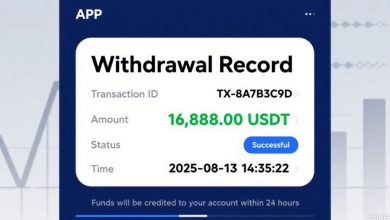AI Music Platform HAiO Launches Airdrop Season 2 Campaign

HAiO, the AI-powered Web3 music platform, today announced the launch of Airdrop Season 2, a mission-driven token reward campaign designed to empower anyone to create, curate, and earn in the music economy—no music skills required.
Under the theme “Build Your Own Music Channel and Get Rewarded,” the campaign allows users to participate simply by engaging with AI-generated music. By checking in daily, listening to playlists, subscribing to channels, and sharing content on social media, users earn HXP (HAiO Experience Points), which can be used to operate a personal music channel and unlock AI-powered features. As users create playlists and receive engagement from others, they accumulate CP (Creator Points). These CPs automatically convert into $HAIO token rewards, with higher contributors climbing the leaderboard to secure even greater airdrops.
Since its successful listing on global exchange KuCoin on July 16, HAiO has rapidly expanded its reach in the Web3 music space. To date, the platform has generated more than 230,000 original AI tracks, attracted over 500,000 connected wallets, and supported the creation of more than 60,000 playlists and 10,000 music channels, marking a sharp rise in both user participation and content creation.
Participation in the Airdrop Season 2 campaign is open to all users. Simply listening to music or curating playlists can lead to real token rewards, making the program accessible even to those with no production experience. The top 100 users on the CP leaderboard will receive guaranteed $HAIO token rewards, while additional milestone-based incentives and NFT benefits are available for all active participants.
What differentiates HAiO from traditional platforms is its innovative approach where AI Agents generate the music, and users act as curators, community builders, and channel operators. This shift lowers barriers to entry and enables anyone to contribute value to the ecosystem through branding, playlist management, and fan engagement. The system is designed not for professional musicians only, but for anyone interested in participating in the next era of music creation and monetization.
In line with this philosophy, HAiO will launch CreatorX Membership in August, offering premium users additional benefits such as double CP rewards, exclusive missions, dedicated ranking systems, and special NFT rewards. This membership program is tailored for high-performing users and those building long-term communities within the platform.
Joel Roberts, CEO of HAiO, stated, “Season 1 proved the demand for AI-generated music and community-driven engagement in the Web3 space. With Season 2, we’re expanding our model to reward curators, not just creators, and with the launch of CreatorX Membership, we’re amplifying both the reward efficiency and user experience.”
Looking ahead, HAiO plans to launch Agent-Fi, a feature that enables users to mint and own AI Agents as NFTs and receive a share of their revenue, along with Live Drop, a Web3-native promotional tool that allows partner projects to distribute their tokens directly to active HAiO users.
As HAiO continues to grow its global presence, it remains focused on building a decentralized music ecosystem where everyone—not just artists or labels—can create, curate, own, and earn together.
For the a future more information, visit www.haio.fun.

Source: AI Music Platform HAiO Launches Airdrop Season 2 Campaign




